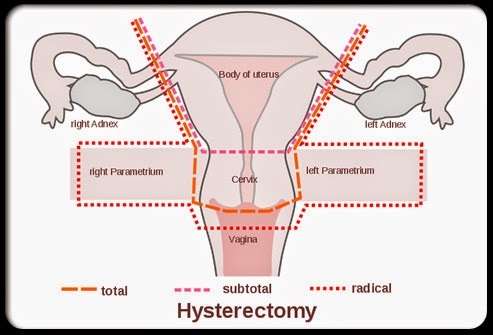Every 10 minutes, 12 American women lose their reproductive organs, every day of every year. Hysterectomy is second only to cesarean in common surgeries. Approximately 660 women die each year in the United States from complications related to hysterectomy. Thousands more suffer long term side effects associated with oophorectomy – removal of the ovaries. The most common reasons for hysterectomy include: uterine fibroids or rather the menorrhagia, heavy bleeding associated with the fibroids and endometriosis, an incredibly painful condition where uterine tissue grows outside the uterus. Both conditions are hormonally modulated, plague millions of women and take years to develop.
One would think that with such extended period of disease progression, 5-10 years, researchers and clinicians would have ample opportunity to develop innovative treatment protocols, long before the surgical removal of the uterus was necessitated. One would be wrong. Despite the cost of long term care leading to, and as a result of the hysterectomy; despite the outcry from the hundreds of patient associations, some with high profile members; despite the billions of dollars spent annually on performing what should be last resort surgeries, there has been no innovation in diagnostic tools for these conditions and no new therapeutics for women’s reproductive health developed in over 50 years, unless you call the re-purposing of old meds innovation.
Instead, innovation in women’s healthcare, much like American healthcare in general only magnified exponentially, comes at the end of the disease progression – when no other choice but surgery exists. Let’s build a cool robotic tool to remove even more uteri. Sure it will cost significantly more and have a higher complication rate, but the technology is so impressive that does not matter. Forget about developing early diagnostics and less invasive, more effective therapeutics, just take it all out and look cool doing so. Who would not want to perform surgery remotely with a million dollar piece of medical technology? Women don’t need their uteri anyway – a win win for all involved.
Robotic Assisted Hysterectomy
The robotic, joystick controlled, remote surgical tool is an impressive piece of engineering. With a price tag of over a million dollars per, it provides the cutting edge stature that all top-notch hospitals strive for. An added bonus, it makes gynecology, the long derided medical profession, the cool kid on the block. But does it work?
Well, not really. Sure it removes a woman’s uterus more quickly and with less scarring; a single ½ inch belly button scare versus two or three ½ inch abdominal scars, but it costs more and doesn’t reduce complications – may even increase them a bit. Compared to the minimally invasive laparoscopic hysterectomy, the robotic assisted hysterectomy costs $2000 more per procedure. As of 2010, about a quarter of all hysterectomies were performed robotically. That’s about $300 million dollars per year more to perform a robotic hysterectomy with no added gain health. When combined with the costs multiple hospital stays, ineffective therapeutics and possible other surgeries that often led up to the hysterectomy, it is clear why women’s healthcare is so expensive.
Perhaps we could use our health dollars a little more wisely. Maybe we should spend some of those many billions of dollars or even a fraction of the $300 million spent annually on robot surgery, on prevention, early diagnostics or more effective therapeutics.
Update
Since this article was originally published in 2013, additional reports of complication rates for robotic surgery have been published. In a study of 298 patients undergoing robotic hysterectomy published in 2015, the complication rate was 18%. In 2017, a study of complication rates of a single surgeon using the robot, was 5.5% suggesting that some surgeons are better with this tool than others. In comparison, a study looking at 4505 hysterectomies performed by the same team between 1990 and 2006 (3190 were performed by laparoscopy, 906 by the vaginal route and 409 by laparotomy) saw the complication rates below 1%, significantly lower than that of the robotic surgeries, but again demonstrating that the skill of the surgical team is paramount.
We Need Your Help
More people than ever are reading Hormones Matter, a testament to the need for independent voices in health and medicine. We are not funded and accept limited advertising. Unlike many health sites, we don’t force you to purchase a subscription. We believe health information should be open to all. If you read Hormones Matter, like it, please help support it. Contribute now.
Yes, I would like to support Hormones Matter.
Photo by Sander Sammy on Unsplash.
This article was published originally on March 18, 2013.









































